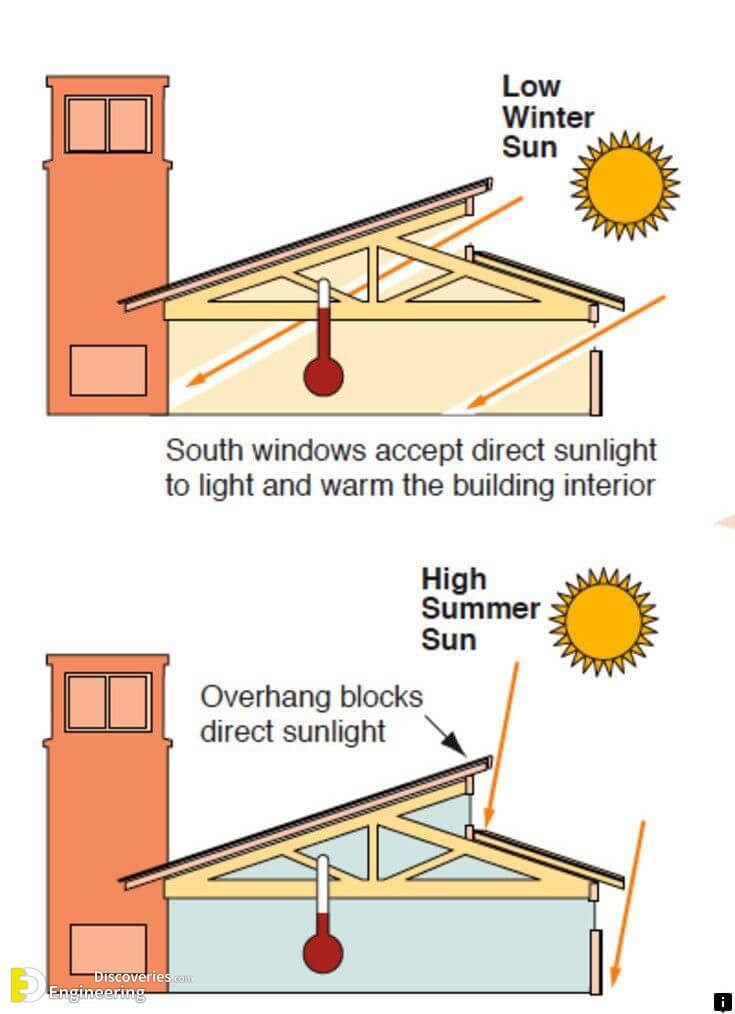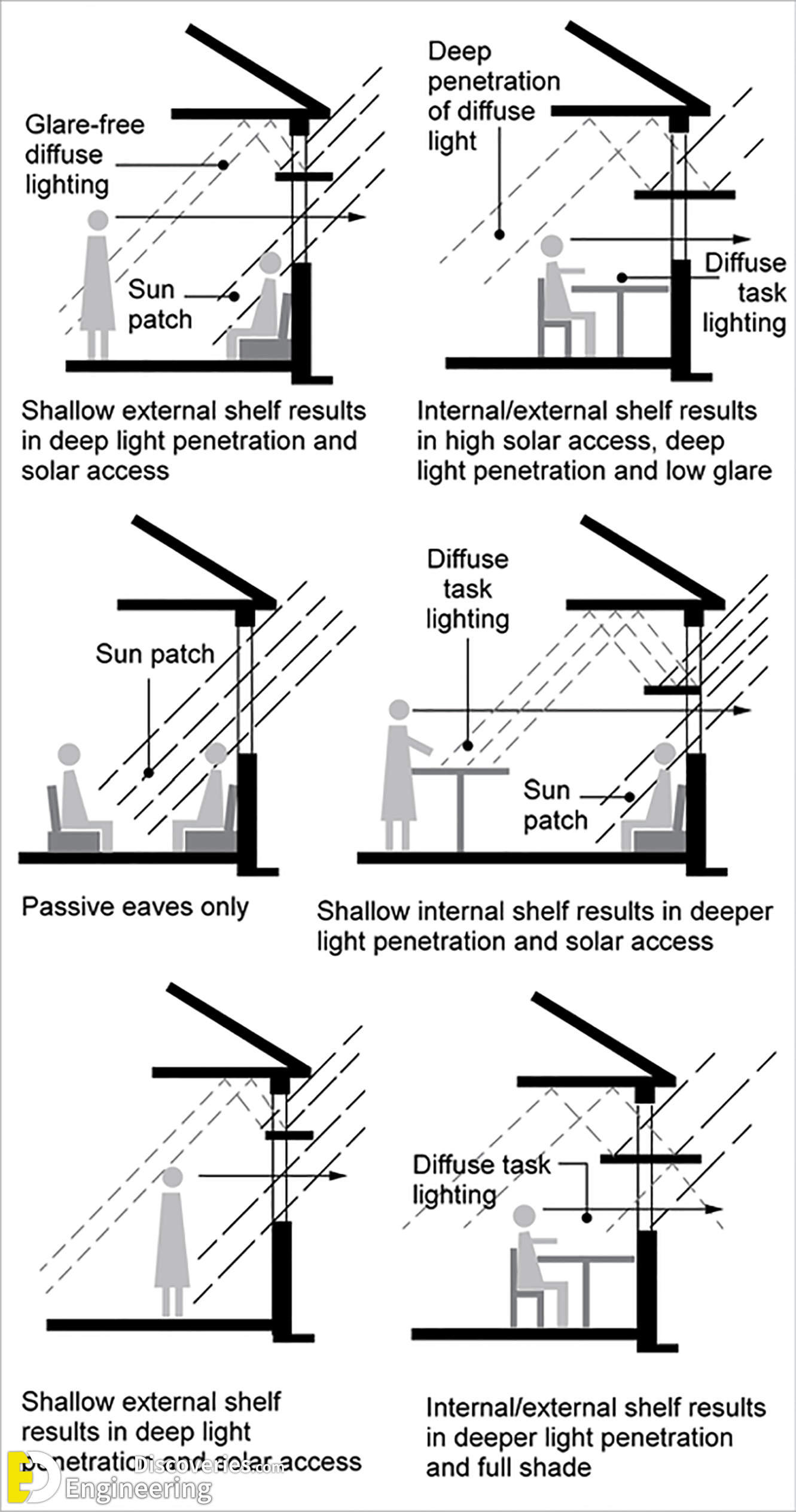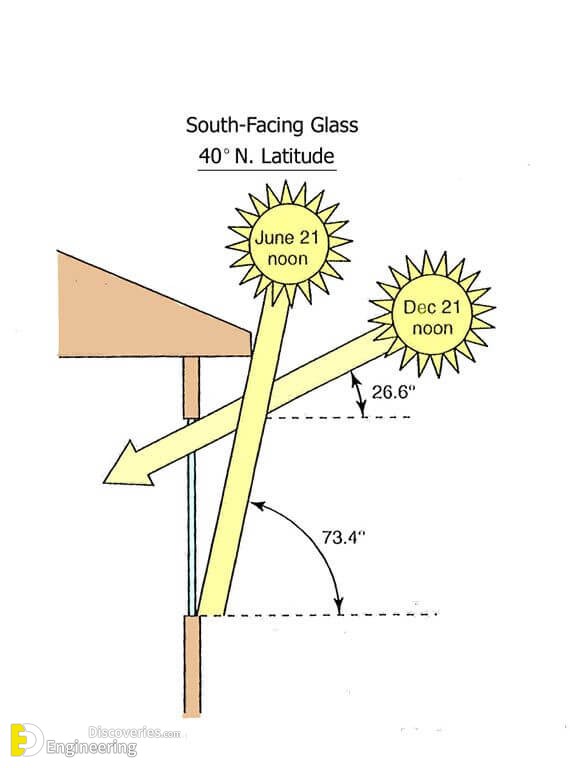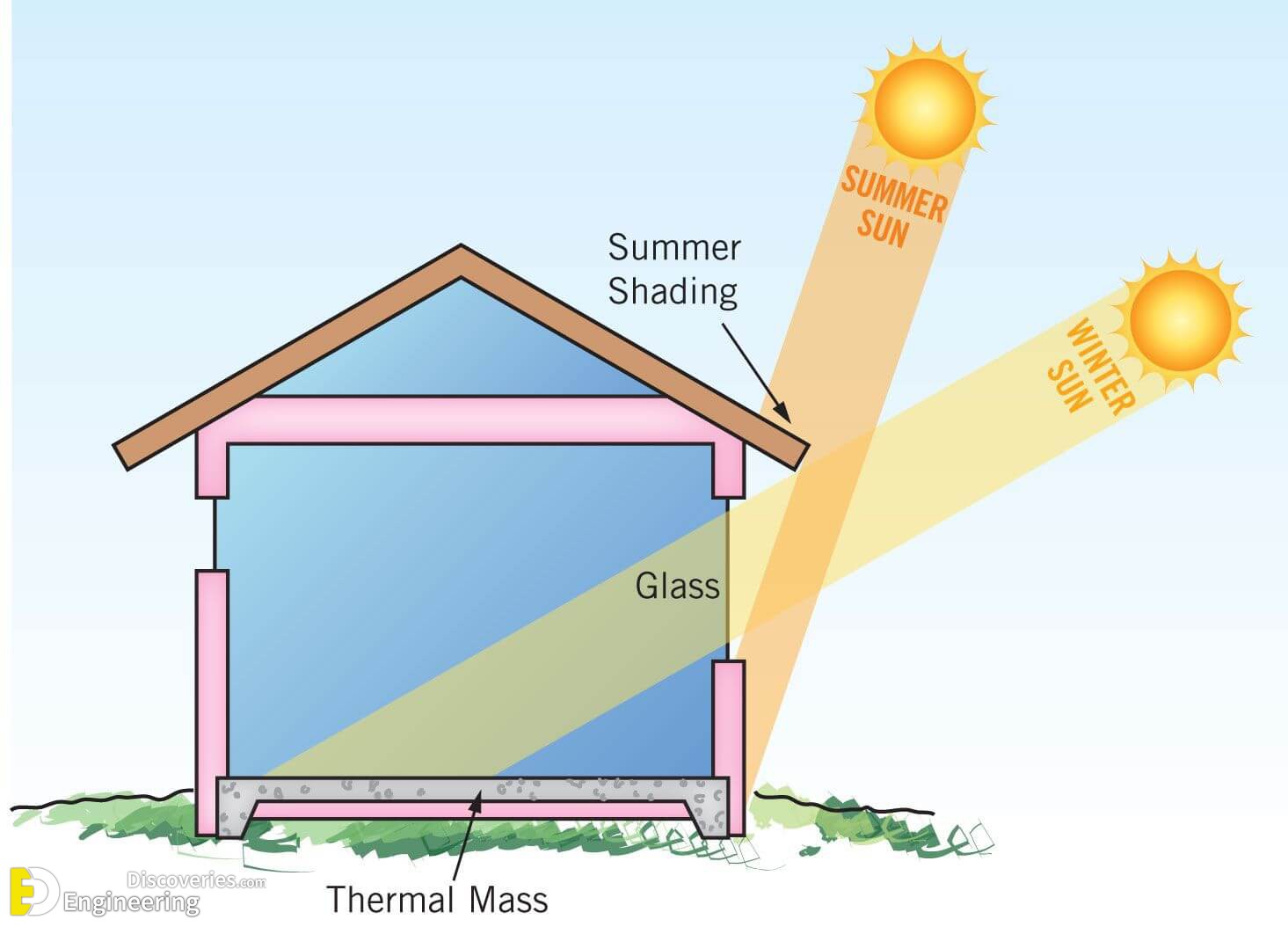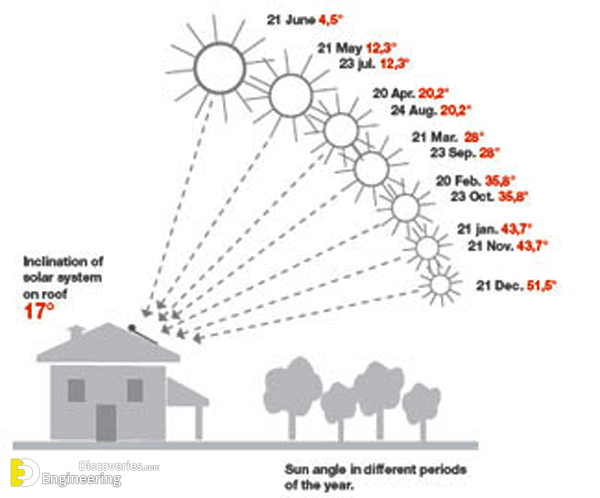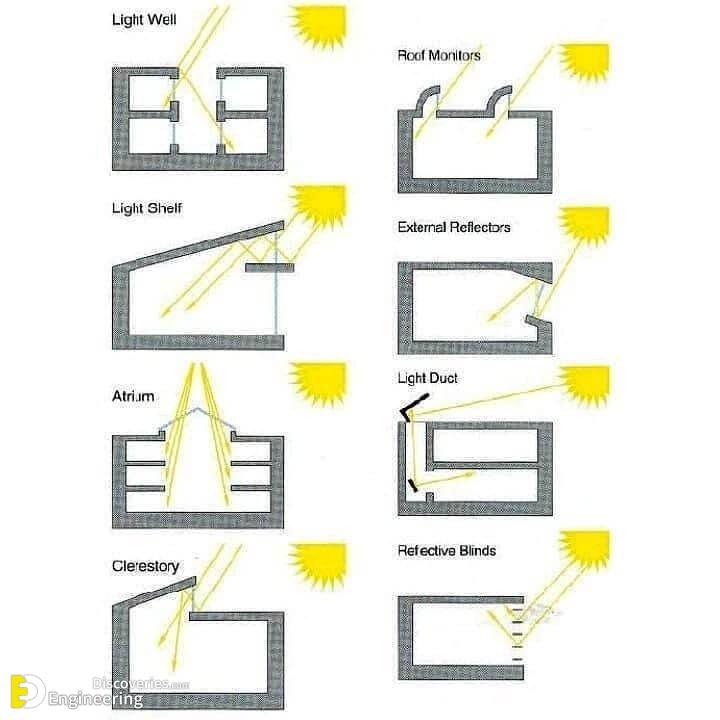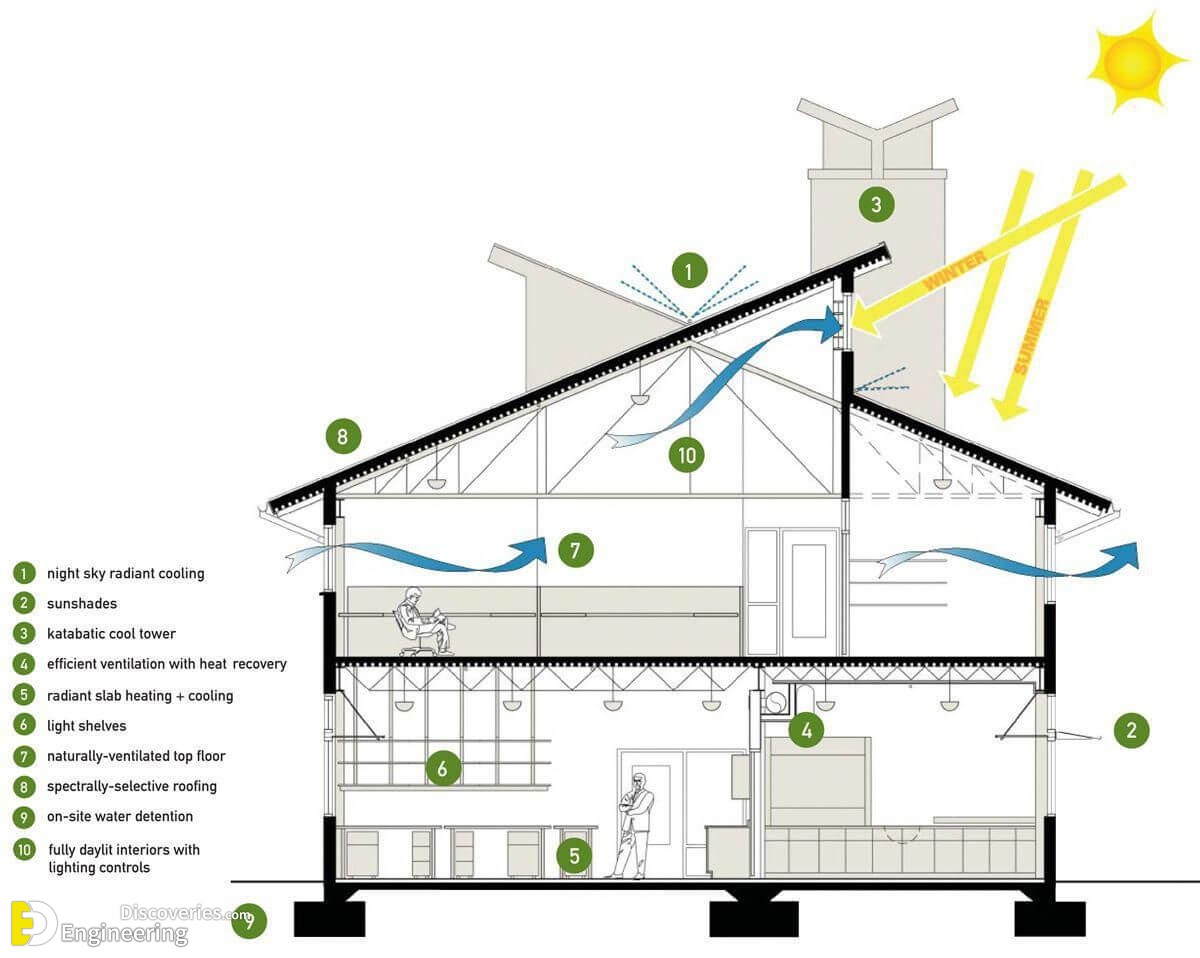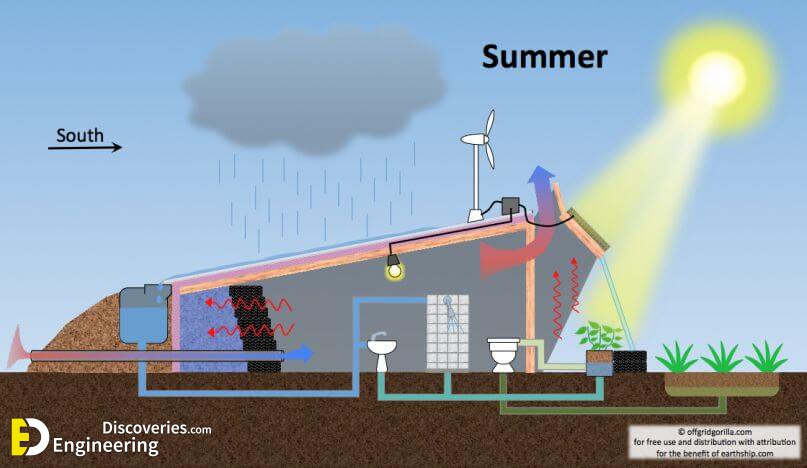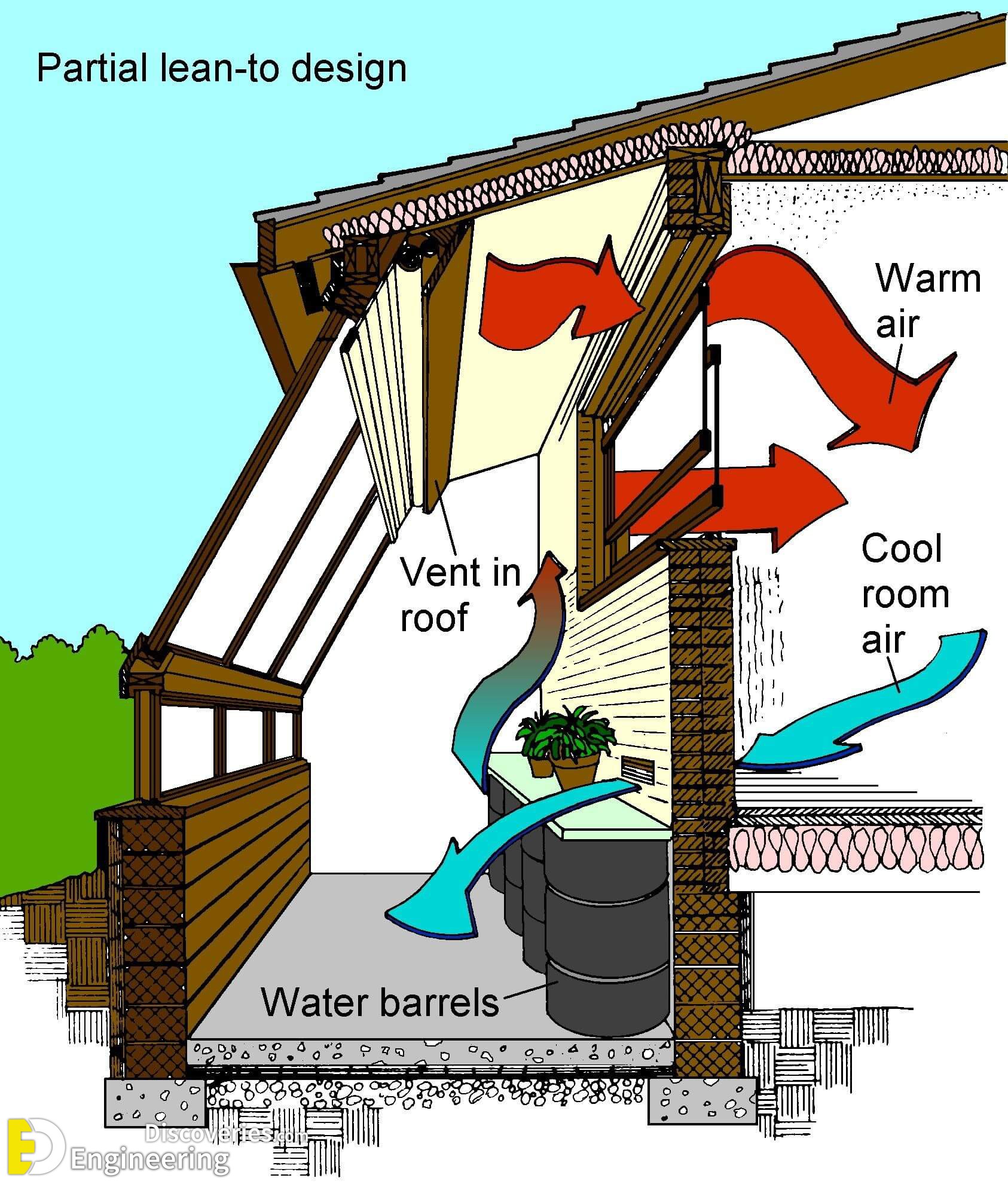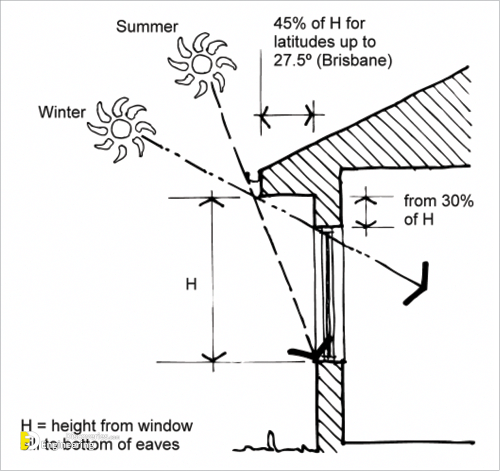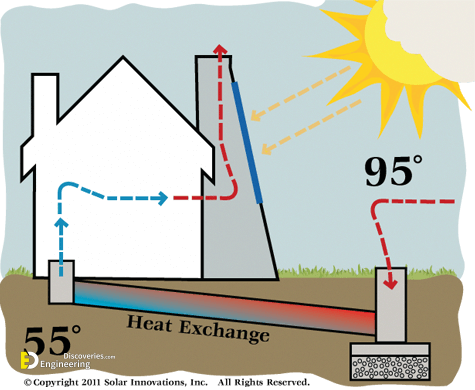Building orientation is the practice of facing a building so as to maximize certain aspects of its surroundings, such as street appeal, to capture a scenic view, drainage considerations, etc. With rising energy costs, it’s becoming increasingly important for builders to orient buildings to capitalize on the Sun’s free energy. For developers and builders, orienting a new home to take advantage of the warmth of the Sun will increase the home’s appeal and marketability. For homeowners, it will increase their indoor comfort and reduce their energy bills.
Thus, building orientation, along with daylighting and thermal mass, are crucial considerations of passive solar construction that can be incorporated into virtually any new home design. InterNACHI inspectors who consult with new homeowners can pass along this valuable information to help their clients reap long-term energy benefits and savings.
Objectives of Building Orientation
The orientation of a building is done for the following purposes
1- To give the correct direction to the building according to the surroundings.
2- To Provide natural light and air to the inhabitants.
3- To save the inhabitants from dust and smoke.
4- To save the inhabitants from noise.
5- To provide privacy to the inhabitants.
6- To save the building from damages due to rain.
7- To save the inhabitants from the bad effects of the worst weather.
8- To add beauty to the building.
Factors Affecting Orientation of Building
The following factors affect the orientation of a building
1- Sun Path
The orientation of the building should be fixed in such a way that the sunlight should enter all parts of the building through doors, windows, and ventilators. Various germs take birth in those rooms where sunlight does not enter. These germs become the cause of various diseases.
2- The direction of Road/Street
Orientation is also much affected by the direction of the road or street. If some plot is situated between two paths, then the front view of the building should be to the side of the major path.
3- Surroundings
Surroundings should also be considered in the orientation of the building. It also includes the method of their construction, ways of living of the neighbors.
4- Wind Direction
The direction of wind blowing throughout the year should also be kept in mind. Favorable and unfavorable winds should also be taken into account.
5- Nature of Rainfall
Humidity affects a building very much. Therefore, the direction of rainfall should be assessed. So, in the building orientation, it should be kept in mind that the smaller part of the building should be affected as far as possible.


